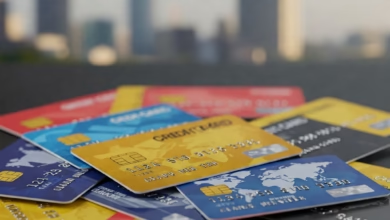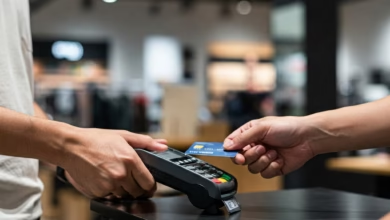What happens when you exceed your credit card limit?
What if you exceed your credit card limit?

It’s a moment that can send a jolt of panic through anyone: you’re at the checkout, you swipe your card, and the machine flashes “DECLINED.” Or, perhaps even more unsettling, the transaction goes through, and you only later realize you’ve just exceeded your credit limit.
That credit limit—the maximum amount your card issuer allows you to borrow—isn’t just a suggestion. It’s a hard-and-fast rule in your cardholder agreement. Crossing that line, whether by accident or on purpose, can trigger a cascade of negative consequences, from high-cost fees to serious, long-term damage to your credit score.
But what exactly happens? And can you even go over your limit in the first place?
The answer has changed significantly in the last decade, and understanding the rules can save you hundreds of dollars and protect your financial health. In this comprehensive guide, we’ll break down everything you need to know.
The Big Question: Can You Even Go Over Your Limit?

For a long time, the answer was a resounding “yes,” and banks profited handsomely from it. A customer would accidentally overspend by $5, and the bank would approve the transaction and then slam them with a $35 over-limit fee.
This practice was so predatory that it was specifically addressed by the Credit Card Accountability Responsibility and Disclosure (CARD) Act of 2009.
Thanks to this federal law, card issuers can no longer automatically charge you an over-limit fee. Instead, they must first get your explicit permission to do so. This is known as “opting in.”
This “opt-in” choice is the single most important factor that determines what happens when you try to exceed your limit. You fall into one of two scenarios.
Scenario 1: You “Opted Out” of Over-Limit Coverage (The “Safe” Route)
This is the default option. If you never told your bank, “Yes, I want over-limit coverage,” you are automatically “opted out.”
Here’s what happens:
You try to make a purchase that would put your balance over your credit limit. The transaction is simply declined.
- The Pro: You are completely protected from over-limit fees. The bank is not allowed to charge you a penalty for a transaction they didn’t approve.
- The Con: It can be embarrassing. Having your card declined at a busy restaurant or store is not a great feeling.
- The Credit Score Impact: Minimal to none. A declined transaction is not reported to the credit bureaus. Your credit score is not affected at all.
This is, by far, the safest and most recommended option for almost everyone. It acts as a hard “stop” that prevents you from overspending and incurring penalties.
Scenario 2: You “Opted In” to Over-Limit “Protection” (The “Danger” Zone)
Why would anyone choose to opt-in? Banks market this as a “courtesy” or “protection” to “avoid the embarrassment of a declined transaction.”
In reality, it’s a way for them to legally charge you fees.
If you have ticked a box on an application or agreed over the phone to “opt-in,” you have given the bank permission to approve transactions that exceed your limit.
Here’s what happens:
You try to make a purchase that puts you over the limit. The transaction is approved. You walk away with your items, unaware of the financial consequences that have just been set in motion.
This is where the real problems begin, and they come in three forms: financial penalties, credit score damage, and a damaged relationship with your bank.
The Immediate Financial Penalties for Going Over Your Limit

As soon as that over-limit transaction is approved, your bank’s system flags your account. You are now subject to fees and interest rate hikes.
1. The Over-Limit Fee
This is the most direct penalty. The bank charges you a flat fee simply for the “privilege” of exceeding your limit.
- Cost: The fee is legally capped. For 2024-2025, the typical first-time violation fee is around $25 to $30. If you remain over your limit or do it again, the fee can rise to $35 or $40.
- Frequency: Issuers generally can’t charge you this fee more than once per billing cycle. However, if you pay your balance back down and then go over the limit again in the same cycle, you could be charged again.
2. The Penalty APR (The Real Killer)
This is, by far, the most expensive consequence. It’s buried in the fine print of your cardholder agreement.
Going over your limit is a violation of your terms of service. In response, many issuers will revoke your card’s standard Annual Percentage Rate (APR) and impose a Penalty APR.
- How High? A typical penalty APR is the highest rate the law allows, often 29.99% or more.
- What Does it Apply To? This is the worst part. The penalty APR often applies not just to the small amount you went over, but to your entire existing balance and all new purchases going forward.
Imagine you have a $5,000 balance at 18% APR. You accidentally go over your limit by $10. Your bank could then re-price that entire $5,000 balance to 29.99% APR. This one tiny mistake could cost you hundreds of dollars in extra interest charges per year until you pay the balance in full.
The Devastating Impact on Your FICO Credit Score
This is the most serious, long-term damage. Even if you avoid a fee or a penalty APR, you cannot avoid the damage to your credit score.
This all comes down to one critical factor: your Credit Utilization Ratio (CUR).
Understanding Credit Utilization (CUR)
Your CUR is the second-most-important factor in your FICO score, making up 30% of your total score (second only to payment history).
The formula is simple:
Total Balances / Total Credit Limits = Your Utilization Ratio
- Example: You have a $1,000 limit and a $300 balance.
- Your CUR: $300 / $1,000 = 30%
Lenders see this 30% ratio and think, “This person is responsible. They have credit but aren’t depending on it.” This is considered good.
What Happens to Your CUR When You Go Over?
Now, let’s say you have that same $1,000 limit, but your balance is **$1,010**.
- Your CUR: $1,010 / $1,000 = 101%
When the credit bureaus (Equifax, Experian, and TransUnion) receive this 101% utilization report from your bank, it sets off massive red alarms.
To a FICO scoring model, a CUR over 100% is the ultimate sign of financial distress. It signals that you have “maxed out” all your available credit and are a very high risk of defaulting on your debts.
The impact is immediate and severe. A single 100%+ utilization reporting can cause a FICO score to drop by 50, 80, or even 100+ points, virtually overnight. It can take a person with “good” credit (740) and instantly drop them into the “poor” credit (640) range.
This single event can be the difference between getting approved for an apartment or an auto loan and being flat-out denied.
The “Hidden” Dangers: How Your Bank Might React

The consequences don’t stop with fees and score drops. The bank is now actively watching you, and they may take further action to limit their risk.
1. “Balance Chasing” (Lowering Your Limit)
This is a particularly nasty and common practice. The bank sees your $1,010 balance on a $1,000 limit and decides you’re too risky.
To protect themselves, they unilaterally lower your credit limit—for example, from $1,000 down to $800.
This has a terrifying compounding effect. Your $1,010 balance is now on an $800 limit, and your utilization skyrockets to 126%! This makes your credit score drop even further and makes it that much harder to get back under the limit. This is called “balance chasing,” and it’s a quick way to spiral into debt.
2. Account Closure
In extreme or repeated cases, the bank may just decide you’re not a customer they want. They can close your credit card account entirely, often with little warning.
This not only takes away your spending power but also hurts your credit score in two more ways:
- It removes your available credit, which (again) will spike your overall utilization.
- It can lower the “average age” of your credit history, another key scoring factor.
3. Loss of Rewards and Benefits
Some card agreements state that if you are not in good standing (which includes being over your limit), you may forfeit any rewards points, cash back, or miles you’ve earned for that billing cycle.
How You Can Accidentally Go Over Your Limit (The Common Traps)
Most people don’t mean to go over. It’s often an accident caused by these common traps:
- Trap 1: Pending Transactions & Pre-Authorizations: You have $50 left on your card. You go to a gas station and pay at the pump. The gas station places a **$100 or $150 pre-authorization “hold”** on your card to make sure you can pay. This temporary hold immediately pushes you over your limit, even if you only end up pumping $30 worth of gas. The same thing happens with hotel check-ins and car rentals.
- Trap 2: Monthly Interest Charges: This is the most common trap. You’re carefully managing your balance and you’re just under the line—say, $990 on a $1,000 limit. Then, your monthly interest charge (e.g., $22) posts to your account. Boom, your new balance is $1,012. You’re now over the limit through no fault of your own spending.
- Trap 3: Recurring Subscriptions: You forgot that your $18.99 streaming service, $15.00 music app, and $50.00 gym membership were all set to auto-pay on that card, pushing your balance over the edge.
- Trap 4: Annual Fees: That $95 annual fee posts once a year, and if you’re already carrying a high balance, it can be just enough to tip you over the limit.
Your Step-by-Step Plan: What to Do Immediately After Going Over
If you realize you’ve gone over your limit, don’t panic. You can fix this, but you need to act quickly.
- Step 1: Make an Immediate Payment. This is the #1 priority. Do not wait for your billing statement or due date. Log in to your app or website right now and make a payment.
- How much? Your goal is twofold. First, pay enough to get your balance under the limit. Second, to fix your credit score, you ideally need to get your balance below 30% of your limit (e.g., under $300 on a $1,000 limit).
- Step 2: Call Your Credit Card Company. Once the payment has posted, call the customer service number on the back of your card.
- What to say: Be polite and calm. Explain that it was an accident (e.g., “I forgot my annual fee was posting” or “An unexpected interest charge put me over”).
- The “Ask”: Say, “As a good customer for [X] years, I’m calling to ask if you would be willing to waive the over-limit fee as a one-time courtesy.”
- The Result: 9 times out of 10, if it’s your first offense, they will waive the fee.
- Step 3: OPT-OUT of Over-Limit “Protection.” While you are on the phone, tell the representative: “I want to ensure this never happens again. Please opt me out of all over-limit coverage so that any future transactions that would exceed my limit are declined.” This is the most important long-term fix.
How to Make Sure This Never, Ever Happens Again (Long-Term Prevention)

Once you’ve fixed the immediate problem, you need to set up systems to prevent it for good.
- Set Up Balance and Payment Alerts: This is the most powerful tool you have. Go into your card’s app and set up:
- A Balance Alert that texts you if your balance exceeds a certain amount (e.g., 50% of your limit).
- An Available Credit Alert that warns you when your remaining credit drops below a certain amount (e.g., $100).
- A Payment Due Alert to remind you 3-5 days before your bill is due.
- Create a “Buffer Zone”: Mentally treat your credit limit as lower than it is. If your limit is $1,000, tell yourself your “real” limit is $800. This $200 buffer protects you from all the accidental traps like interest charges and annual fees.
- Check “Available Credit,” Not Just “Balance”: Before a large purchase, always check your available credit. This number has already subtracted all pending transactions and holds, giving you the real, spendable amount you have left.
- Ask for a Credit Limit Increase (CLI): This may sound counterintuitive, but it’s a brilliant long-term strategy.
- Why it works: A higher limit makes it harder to go over and dramatically improves your credit utilization.
- Example: A $500 balance on a $1,000 limit is a 50% CUR (Bad). That same $500 balance on a $2,500 limit is a 20% CUR (Great).
- How to do it: Many issuers (like Capital One, Discover, and Amex) allow you to request a CLI right from their app with a “soft pull,” which does not affect your credit score.
A Costly Mistake That Is 100% Avoidable
Going over your credit card limit is a serious financial misstep. It invites expensive fees, can trigger a crippling penalty APR, and deals a fast, heavy blow to your credit score.
But the good news is that it is 100% avoidable.
The CARD Act of 2009 gave you the power. By opting out of over-limit coverage, you build a “decline” wall that protects you from all the penalties. While a declined transaction might be a minor, temporary embarrassment, the fees and credit score damage from an approved over-limit charge are a major, long-term financial headache.





